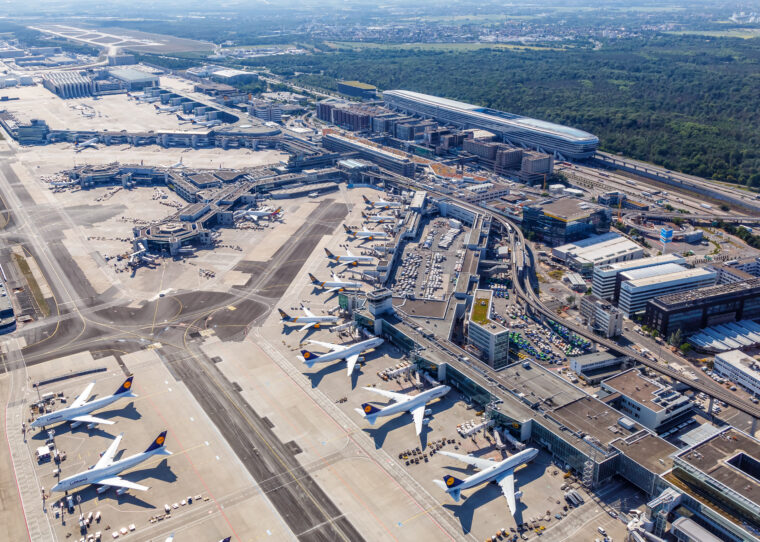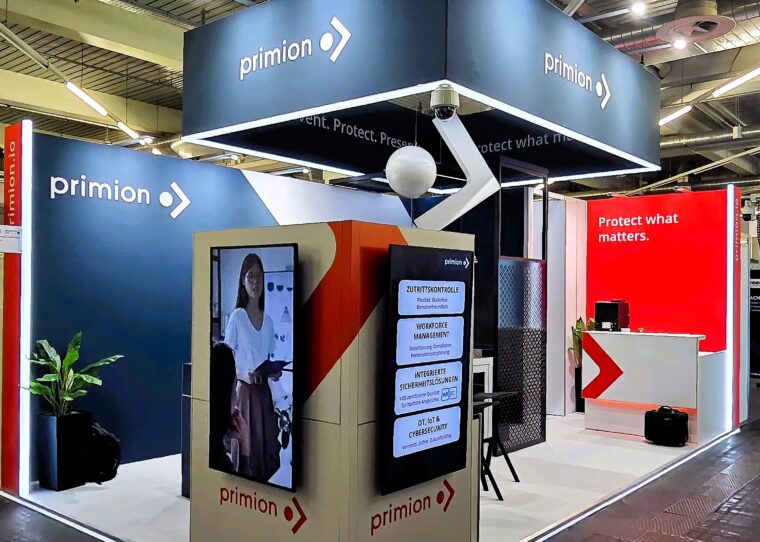What does NIS2 really mean for your physical access control?

Here’s what keeps compliance officers awake at night: you can invest millions in network security, deploy sophisticated endpoint protection, and implement zero-trust architecture, but none of it matters if someone walks through an unlocked server room door.
NIS2 has formalized this reality. Under Article 21 of the directive, physical access control isn’t a facilities responsibility anymore, it’s a cybersecurity imperative with the same regulatory weight as your firewall policies. Organizations must implement physical security measures that prevent unauthorized access to critical infrastructure, data centers, and operational technology environments.
For CISOs and facility managers across essential and important entities in the EU, this isn’t just a policy update. It’s a complete restructuring of how security strategy, budget authority, and executive accountability are defined.
Why NIS2 Treats Physical Access Control as Essential Cybersecurity
For decades, organizations maintained a clear boundary: IT secured the network; facilities secured the building. That division is now a regulatory liability.
The End of the Physical-Digital Security Divide
NIS2 Article 21 eliminates the distinction between physical and digital security controls. The directive explicitly requires “security measures in the physical security of the entities’ premises and facilities” as part of a comprehensive cybersecurity risk management framework. This isn’t a suggestion, it’s a legal requirement backed by enforcement mechanisms that include mandatory audits, cross-border regulatory cooperation, and substantial financial penalties.
The regulatory logic is straightforward: unauthorized physical access to a data center, server room, or industrial control system bypasses every cybersecurity investment you’ve made. An intruder with physical access doesn’t need to crack encryption, defeat multifactor authentication, or exploit software vulnerabilities. They simply walk through an unmonitored door
What is NIS2 Article 21?
NIS2 Article 21 mandates physical security measures as part of cybersecurity risk management. It requires organizations to prevent unauthorized physical access to premises and facilities housing critical systems, with the same rigor applied to digital security controls.
The Hidden Compliance Gaps CISOs and Facility Managers Face
Most organizations believe they have adequate physical security. They have badge readers, locked doors, and security guards. Yet when auditors examine their compliance posture, three critical gaps consistently emerge.
Standalone Systems That Can’t Prove Compliance
The majority of organizations still operate standalone access control systems that lack the capability to feed logs into critical event management platforms. These legacy systems (including badge readers, magnetic locks, turnstiles, and gate controllers) were designed solely for physical security operations. They generate operational logs, but these records remain trapped in isolated databases or proprietary formats that cannot be effectively extracted, centralized, or analyzed for compliance purposes.
From an audit perspective, this presents an unmanageable challenge. NIS2 doesn’t necessarily require integration with IT infrastructure, but it absolutely requires that physical access events be logged, retained, and available for review through a Critical Event Management (CEM) platform. When auditors or regulators ask, “Provide a comprehensive record of physical access events for the past 12 months, including failed attempts and after-hours entries,” organizations relying on standalone systems face an impossible task. The data may technically exist somewhere in the system, but it cannot be efficiently retrieved, correlated by time period, or presented in an auditable format.
The Risk: Without centralized logging capability, an organization cannot demonstrate compliance with NIS2’s monitoring and documentation requirements. The absence of accessible, comprehensive logs is treated as the absence of controls, regardless of whether physical security measures are technically in place.
Fragmented Responsibility Between IT and Facilities
In most organizations, a distinct divide exists: CISOs own the cybersecurity strategy, budget, and digital incident response, while Facility Managers own physical security, building operations, and access control infrastructure. Though regulatory frameworks like NIS2 demand convergence, organizational structures have failed to adapt.
This misalignment creates a dangerous compliance gap where neither leader has clear, singular ownership of physical-digital integration:
- Budgeting stalls: Necessary integration requests fall between departmental budgets
- Incident response fails: Playbooks do not account for physical breaches or coordinated cyber-physical attacks
- Training misses the mark: Security awareness focuses solely on phishing and malware, completely ignoring physical vectors like tailgating and credential sharing
The Risk: Governance failures are among the first issues auditors identify. Without clear ownership and cross-functional coordination, compliance programs stall regardless of technical investment.
Monitoring and Documentation Gaps
NIS2 requires comprehensive logging, real-time monitoring, and 24-hour breach notification. For digital systems, most organizations have these capabilities through SIEM platforms, Security Operations Centers (SOCs), and established incident response protocols.
Legacy access control systems do generate logs, but these records often sit in isolated databases that security teams never review. Crucial security signals are routinely missed: failed access attempts may not trigger immediate alerts, and after-hours entry to sensitive areas might be logged but goes entirely unmonitored. Consequently, when an actual incident occurs, security teams lack the detailed, timely access history required for effective forensic analysis and response.
The Risk: Even if you have physical controls in place, you may not be able to prove them during an audit. Documentation gaps are compliance failures under NIS2’s stringent reporting requirements.
The Zero Trust Physical Access Control Framework for NIS2 Compliance
Zero Trust (the principle of “never trust, always verify”) is now the established gold standard for digital security, and the same core approach must be applied to physical access. Under this model, every access request must be verified in real time, every entry point must be continuously monitored, and critically, no credential receives default or implicit trust regardless of the user’s role.
This isn’t theoretical. Zero Trust physical access control is how leading organizations are successfully meeting NIS2 requirements while simultaneously improving day-to-day operational security, significantly reducing insider threat risk, and building a genuinely audit-ready compliance posture.
Verify Every Access Request
In legacy physical security models, possession of a valid badge was sufficient. If your credential worked, you gained access. Zero Trust completely reverses this outdated assumption.
Modern NIS2-compliant access control implements multi-factor authentication (MFA) directly at physical entry points to critical infrastructure. This could be a badge plus PIN, biometric verification plus a credential, or a mobile credential combined with a real-time authentication challenge. The specific technology varies, but the principle remains constant: verification happens at every single access request, not just at initial credential issuance.
This practice eliminates several critical vulnerabilities:
- Stolen or cloned badges become useless without the second authentication factor
- Shared credentials, a persistent problem in high-turnover environments, no longer grant access
- Lost badges no longer create unmanaged security risks
The fundamental shift is clear: moving from “perimeter security” (trusted inside, untrusted outside) to “continuous verification” (trust nothing, verify everything, every time).
What is Zero Trust Physical Security?
Zero Trust physical security applies the cybersecurity principle of “never trust, always verify” to building access. It requires authentication at every entry point to critical infrastructure, enforces least-privilege access policies, continuously monitors all access events.
Enforce Least-Privilege Access
In many organizations, employees are granted access to far more physical space than their roles strictly require, creating unnecessary security risk. For instance, a finance team member rarely needs access to server rooms, and a facilities worker shouldn’t require entry to executive offices, yet badge access is often configured broadly for convenience.
Zero Trust directly addresses this by mandating role-based access control (RBAC) applied to all physical spaces. Access is granted strictly based on job function, limited to specific locations, and bounded by time constraints. Temporary workers receive credentials that automatically expire, and contractors gain access only to designated areas during designated hours.
Critically, executive access does not override security policies. It follows the same rigorous verification and monitoring protocols.
This approach intentionally creates operational friction because convenience is subordinated to security and auditability. From a NIS2 compliance perspective, this is precisely the requirement: you must demonstrate that access policies are purposeful, documented, and consistently enforced. Auditors interpret the “everyone can go everywhere” model as clear evidence of inadequate risk management and a failure to implement appropriate security controls.
Monitor and Log Continuously
Every access event (whether successful or failed) generates a log entry that must feed into centralized security monitoring. In Zero Trust physical access implementations, these logs fully integrate with SIEM or Critical Event Management platforms.
Automated alerting identifies anomalies in real time. The system can flag critical security signals such as:
- A badge used in two locations within an impossible timeframe (suggesting cloning or credential sharing)
- Access attempts during unusual hours
- Repeated failed authentication attempts
- Unauthorized entry to restricted zones
- Tailgating detection (multiple entries on a single credential scan)
The audit advantage is immediate. When regulators or internal compliance teams ask for access history, you can provide comprehensive, timestamped, correlated data instantly, rather than relying on fragmented spreadsheets or paper logs. This represents a significant maturity leap: moving from reactive log review (after an incident occurs) to proactive security (preventing incidents through real-time detection and response).
Physical Security Is Cybersecurity Under NIS2
The fundamental premise of NIS2 is that cybersecurity cannot be achieved through digital controls alone. An organization can deploy the most sophisticated network security architecture available, implement rigorous access management policies, and maintain a world-class Security Operations Center, and still suffer catastrophic breaches if physical access to critical infrastructure remains inadequately controlled.
Article 21 formalizes what security professionals have long understood: the weakest link in most security programs isn’t a software vulnerability or a misconfigured firewall. It’s an unlocked door, an unmonitored server room, or a legacy access control system that nobody in IT security has visibility into.
For CISOs, this means accepting that cybersecurity responsibility now explicitly extends to physical domains that were previously outside your purview. Your risk assessments must include physical attack vectors. Your incident response playbooks must account for physical breaches. Your security monitoring must integrate physical access logs with digital security events. Most importantly, your compliance posture will be evaluated on how effectively you’ve integrated physical and digital security controls into a unified risk management framework.
For Facility Managers, this means recognizing that physical security is no longer just about safety and building operations. It’s a regulatory compliance requirement with the same weight as data encryption and network security. Your access control systems must meet the same logging, monitoring, and audit standards as IT systems. Your security policies must align with cybersecurity frameworks and risk management methodologies. Your budget requests must account for technology integration that enables compliance, not just operational efficiency.
The organizations that will succeed under NIS2 are those that recognize this convergence as an opportunity, not just a compliance burden. Integrated physical-digital security doesn’t just satisfy regulatory requirements. It creates genuinely more resilient security postures that reduce risk, improve incident response, and demonstrate to customers, partners, and regulators that security is taken seriously at every level.
The question is no longer whether physical access control is a cybersecurity concern. NIS2 has answered that definitively. The question is whether your organization’s structure, governance, and technology infrastructure reflect that reality, or whether you’re still operating with a division between physical and digital security that regulators will identify as a fundamental compliance failure.
Your server room door is now a cybersecurity asset. The only question is whether you’re managing it like one.
Other articles

What does NIS2 really mean for your physical access control?

IoT in OT Security: New Risks, New Solutions

Primion drives Next-Level Security at SicherheitsExpo Berlin

Converged security will be a gamechanger
